From bridges, ports, and dams, to sea battle sites and more, Abbott Underwater Acoustics’ Brian Abbott relies on sonar and BOXX to capture incredible images above and below the surface.
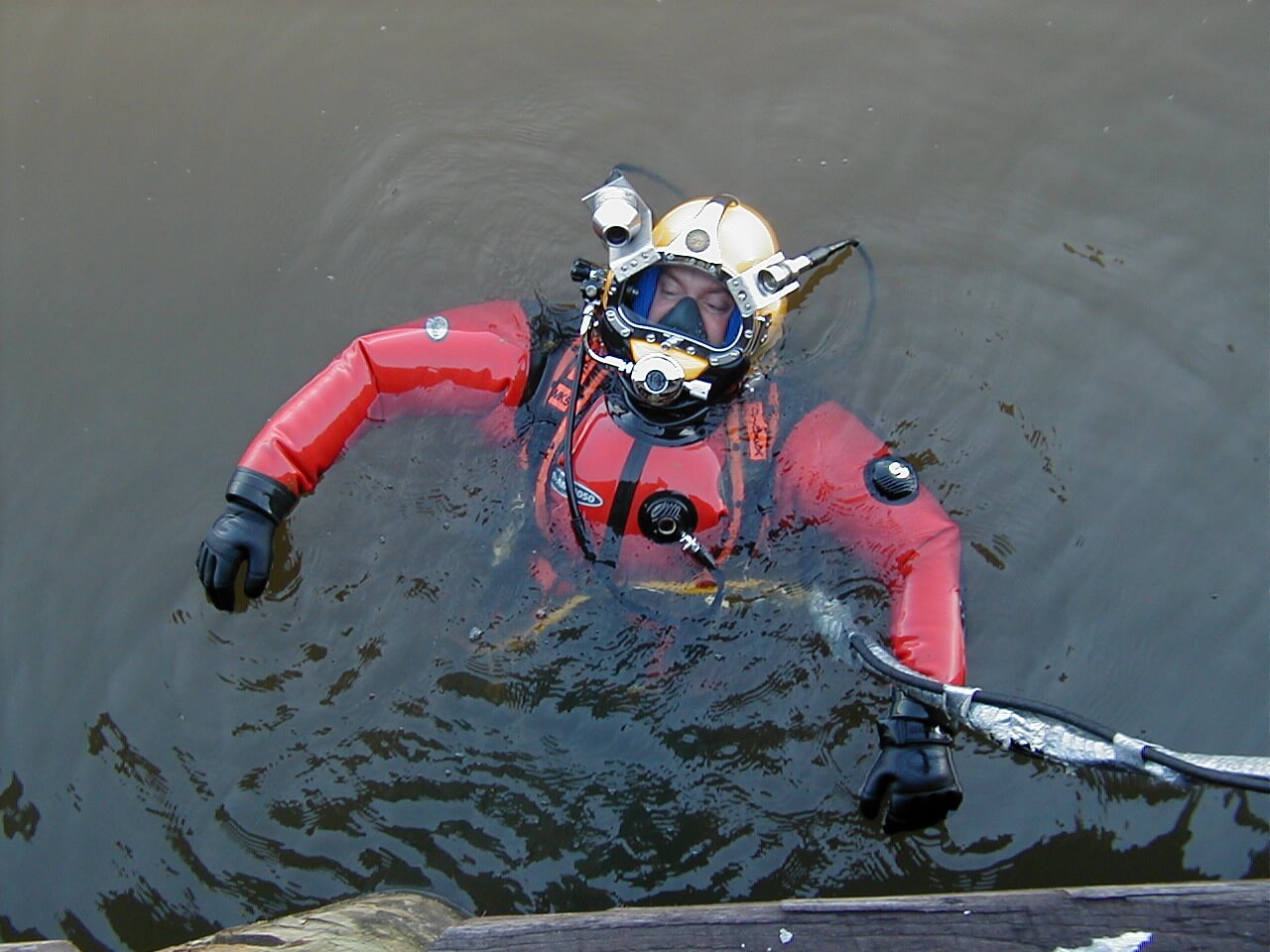
Brian Abbott is an engineer and former commercial diver who does underwater inspections on bridges, dams, ports, and harbors. Many years ago, when he was still diving, Abbott was hired to inspect a municipal bridge in need of repair. He found himself underwater in a three knot current, up to his waist in mud, and hampered by zero visibility. Was there damage to the structure? Most certainly there was a hole, but due to the difficult conditions, gauging its size was a challenge. Brian had to make an educated guess.
He told the city that the hole was roughly 350 cubic yards, but unfortunately, “roughly” didn’t begin to cover it. The damage actually spanned 900 cubic yards. “I blew the budget for the city and they weren’t happy with me,” Abbott recalls. “I needed a different way to inspect these projects.” After meeting a sonar professional at a trade show who relied on the technology to map structures underwater, Abbott was sold. In 2004, he started his own company, Abbott Underwater Acoustics, and made sonar operation the cornerstone of his business. Along the way, he’s also made BOXX a cornerstone of his operation. Over the years and throughout the world, Abbott has inspected hundreds of bridges, ports, harbors, and dams using sonar to map and produce structural baseline surveys. He’s also delved into archeological projects like shipwreck searches, ancient cultural resources like sunken cities, and military planes and vehicles (along with their valiant crews) lost in battle. “I’m not an archeologist,” Abbott says, “I’m a sonar guy, so I map and find things and let them do the interpretation of those underwater.”
Brian Abbott grew up in Michigan, earned engineering degrees at the University of Colorado, and attended commercial dive school in Scotland, then stayed on for a while, plying his new trade. “Commercial diving is a mode of transport to the worksite,” he says matter-of-factly. “I was doing the same thing an engineer was doing above the waterline but I was taking it under the waterline.” Abbott inspected bridges, dams, ports, and harbors for structural damage, deterioration problems, welding issues, and the like, but despite the excitement of it all, a degree of doubt gnawed at him. “I was never quite sure of myself in the context of am I seeing everything I need to see down there,” he admits. “With zero visibility, you can walk into the Empire State Building and miss stuff, but sonar lights everything and you’ll see the little defects you miss as a commercial diver. What I do in five minutes may take two hours when commercial diving, but that’s not a rap on commercial diving. I love it. I did it for years, but it’s a young man’s game. The guys who do it are phenomenally good, but getting an image to a client works better than a two-page report. When I deliver my report to an engineer, facilities manager, or a company president, they clearly understand the problem.”
With sonar as the foundation of his business, Abbott can look at a structure and find problems if they exist. Thanks to his images, complete with sonar data like actual measurements and volumes, the client can make an informed decision, i.e., how much money they’re going to have to allocate to fix and repair the problem. Can they do it all at once? Can it be completed in stages? These are critical questions when dealing with infrastructure budgets and Abbott eliminates the guesswork and gets all stakeholders on the same page. “The real beauty of the underwater imaging world is if I only write a report, everyone who reads it is going to have a different understanding, a different idea of what this image looks like underwater,” he says. “But if I show them an image or flash picture, I can measure the hole and it doesn’t take a lot of geniuses to figure out you have a hole ten feet wide and five feet deep. It’s going to cost x amount of dollars to repair.”
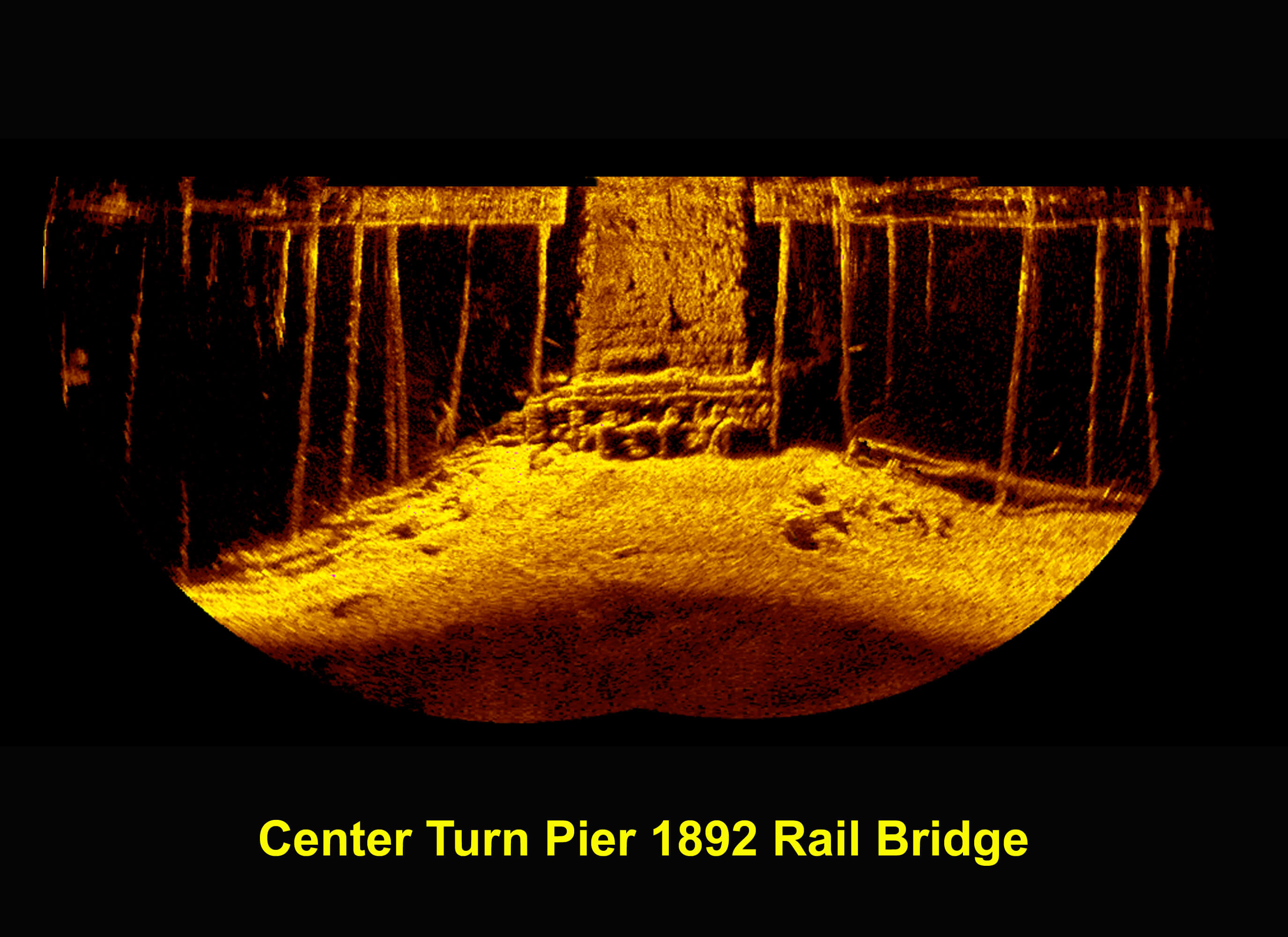
According to Abbott, in many cases underwater structures are “out of sight, out of mind.” For bridges, federal highway laws mandate inspection above the waterline every two years, but below water, only every five. When I ask why, Abbott admits that even he doesn’t have a good answer. “You can go five or ten years without inspecting a bridge underwater,” he laments. “To be blunt, America’s infrastructure is falling apart. Many things are past their design life and that’s why our highway systems are not in good shape. The problem is where will we get the money to repair these? As taxpayers, we all have an interest in good roads and bridges, but then not everyone wants to pay the high amount of taxes because we’re not talking hundreds of millions, we’re probably talking trillions to fix the whole infrastructural system.” Unless they have been hit, Abbott assures that, for the most part, bridges are safe, based on the terms functionally deficient, and structurally obsolete. He illustrates his explanation using an old BOXX computer. “If I had a 2002 BOXX, it would be functionally obsolete in today’s world. That doesn’t mean it’s in bad shape or isn’t going to work. It’s just that the technology has passed it by so much that it doesn’t operate as well as it should. It’s not meeting today’s standards. So, it doesn’t mean that bridge will fall down or isn’t safe to drive across. It just means it’s not meeting current standards. The same goes for dams, ports and harbors, We move so much by shipping and rail around the world and I think people would really be amazed on how much gets transported across our infrastructure systems. It’s massive. State DOTs are not really funded as they should be in order to make repairs, upgrade, or build completely new systems. Everything is based on the gas tax and in some states, gas is more expensive because you’re paying the higher tax. Are they repairing the brides, dams, harbors, and ports from these tax dollars? I don’t know. A lot of times that money ends up in the general fund instead of allocating it to the DOTs.”
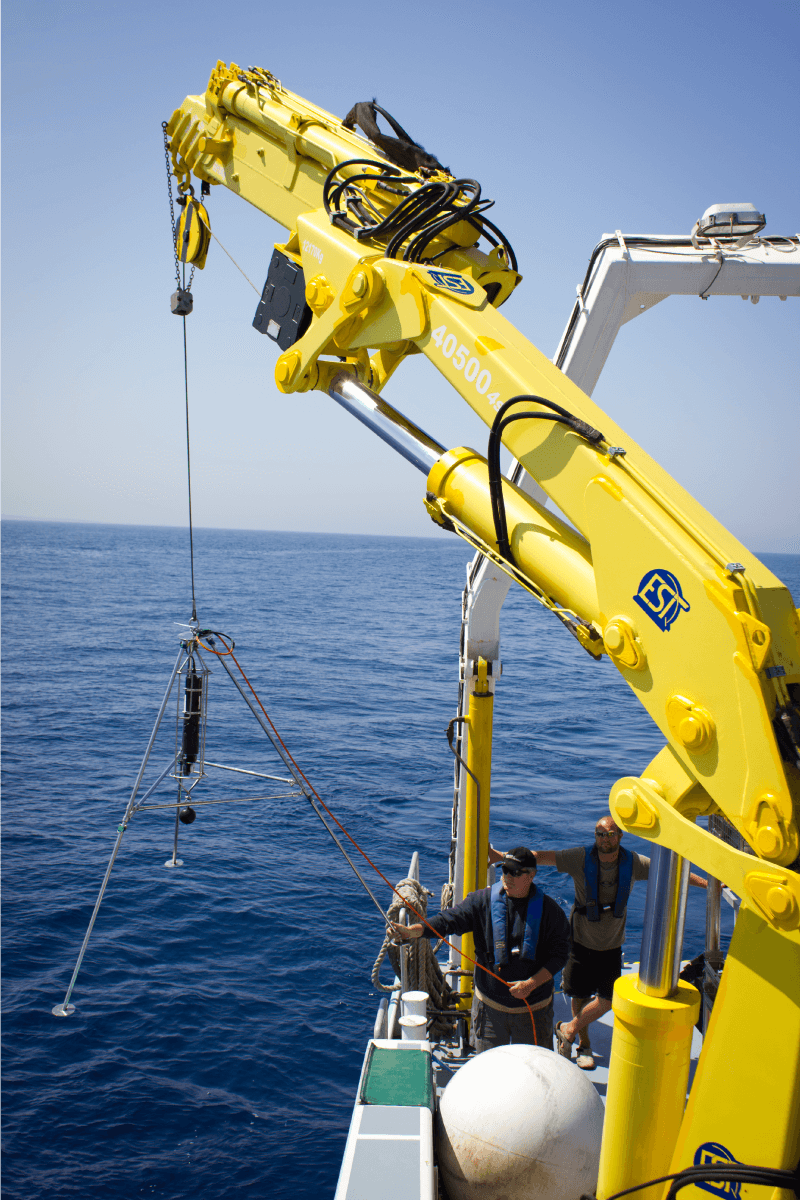
When I ask Abbott how the process works, he quickly breaks it down. He receives a call from a client, who in in this case, is responsible for a dam. They’re worried about some aspect of the structure, maybe some undermining or they just want it inspected underwater. Abbott submits a proposal for a crew of two or three. He may need a boat, maybe a crane. Once approved, he’s out on the job for one to five days equipped with up to three different types of sonars and his GoBOXX laptop equipped with a four core Intel® Core™ i7-6700K processor (4.0GHz) 64GB of RAM, NVIDIA Quadro GPU, 64GB of RAM, and 1 TB SSD. He’ll go across the dam, take sonar images of all the bottom the walls, (or if it’s a bridge pier wall, a vertical plane and the bottom plane too).
The sonar device is completely tethered and it’s been as deep as 12,000 feet. In that instance, it must be carried by a certain type of vehicle capable of traveling to that depth (for reference, as much as seven miles of cable). If it’s on a boat, it’s attached with some sort of deployment mechanism, or what Abbotts refers to as “The Holy Grail.” The grail in question mounts the sonar in a particular position so if Abbott wants to view the bottom of a river bed he will mount it on a tripod. If he needs to look at the walls, he can point the sonar in that direction in order to see the wall. He can tow it if necessary. There are even types of sonar that can be mounted to your boat, so you fly around. This multi-beam process is commonly referred to as “mowing the grass.”
Abbott’s sonar projects also require stellar GPS systems, which can get him within 3-5 feet of the structure. Sometimes he needs higher accuracy, which demands real-time kinematic (RTX) GPS for centimeter accuracy. “There’s a lot that comes into play with this,” he says. “Think of shining a flashlight straight down into the water from a rocking boat. That beam of light is going all over the place. The boat uses a motion reference unit (MRU) attached to the sonar system and it compensates for all these type of movements. The MRU receives constant updates every second as it tries to keep the equipment still.
You can mount as many as eight sonars on the underwater remotely operated vehicles, some of which are designed to go full ocean depth. At 20,000 feet, these sonar images, traveling over cable, arrive into the GoBOXX in real-time. “I need a good computer that can handle all this type of information,” says Abbott. “I have satellite uplinks coming in, I have this motion reference unit taking all these calibrations and constantly updating, I have sonar data coming in, and, dependent upon the system, additional information. The better the system I have, I can connect these components and it’s easier for the computer to read. If you go out to a particular store and buy a $350 laptop, chances are it’s not going to be able to handle a lot of the systems you’re connected to. That’s why I fell in love with BOXX. For eight years, I have not had a problem between the external components and the computer. Everything works well together. It’s like commercial diving. The last thing you want to worry about is your diving gear. Diving isn’t what you do, diving is a mode of transport to the worksite. That’s what the computer is to me. It’s a mode of transport for me to get the data and information. The client doesn’t care what I use, they just want to see pretty images. But In order to get that, I need all the good peripheral and cornerstone components put together.” Abbott carries a GoBOXX laptop on site at all times. “It’s my go-to tool,” he says.
For post work, Abbott relies on a 3DBOXX 8920, a 2013 dual Intel® Xeon® workstation now replaced in the BOXX model line up with machines like the APEXX X3 (overclocked, 18-core Intel Core X-series processor and NVIDIA Quadro RTX 4000) and the flagship APEXX S3 (overclocked Intel Core i7 and NVIDIA Quadro RTX). Every day of field work requires at least 2-3 days of post processing, so a week on site equals two weeks of post processing in his home office to create what is typically 2D and 3D images along with a written report. Recently, Abbott completed a ten page report (filled with 150 figures) looking for structural defects in a tunnel. “Each two foot interval I took a sonar image,” he says. “I have to figure out how to display that image to the client so they can understand what that is and what they’re getting as an end product. When I send it, it’s usually an electronic copy via Google Drive or Dropbox. This report was 4.5 GB.”
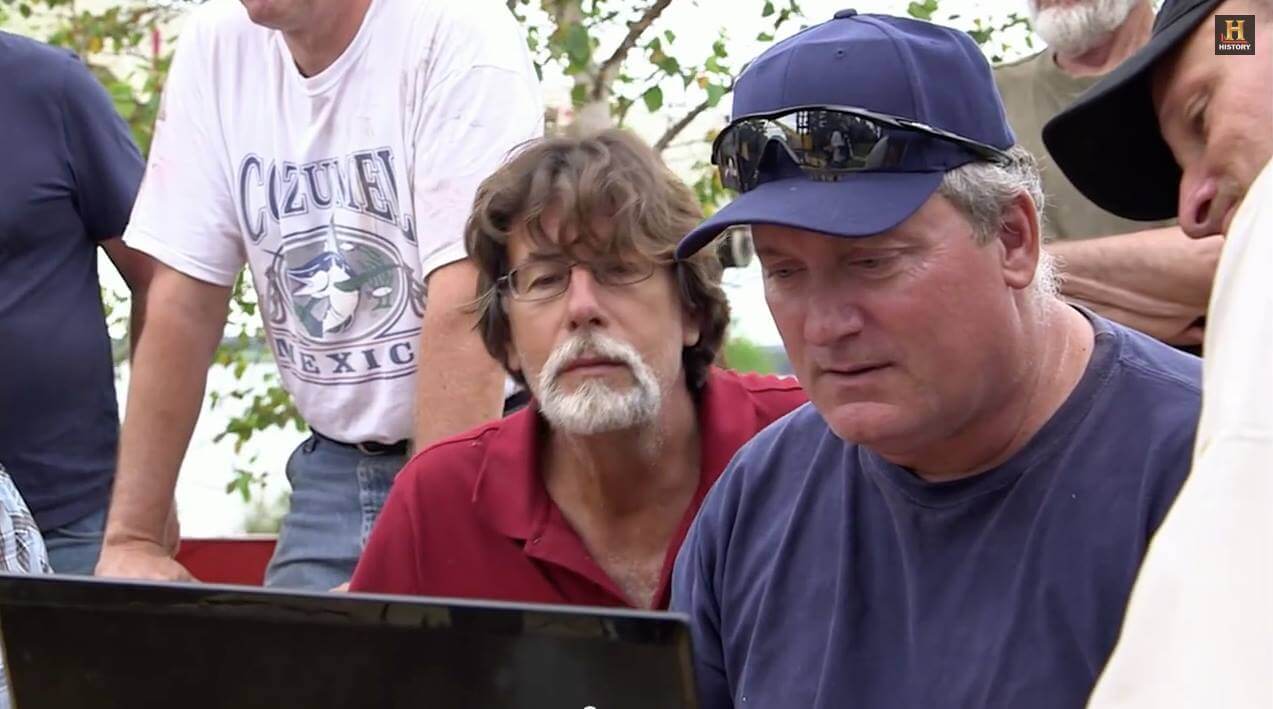
So how does Abbott put his images together? He relies on a cloud point software because he also must laser scan structures above the water, for example, a sea wall. Below the water line, he has the sonar data. “If I stop at the waterline, that’s only half the structure,” he says. “So I line them up and connect them and create a 3D or 2D structure tied together. That cloud point is massive, but I must be able to rotate that three dimensionally to show the client what their structure looks like above and below water. I don’t have a software that can do everything I need to do. It requires different CAD applications like AutoCAD and Rhino. I use Adobe Photoshop 80% of the time, Illustrator, and Acrobat for the final written report.”
In addition to the massive file sizes, relying on multiple software applications simultaneously is Abbott’s biggest challenge. At any given time, he may have multiple applications open on his desktop, but his workstation is more than up to the task. “BOXX solved all my workflow problems,” he says. “Sometimes I’ll have Rhino and AutoCAD in split screen, and on the other monitor, Photoshop. I’m looking at things, maybe dimensioning, maybe rotating images exactly at the same time and both software applications are doing what I’m asking –no smoking, screaming, or yelling. I don’t have to think about whether or not the computer can handle it. I don’t have to think about it as I’m bringing in 100 million data points in Rhino. I just go ahead and bring them in. I’m looking at my screen right now and I have eight different software apps open without any slowdown.”
When I ask Abbott about any further challenges, he offers a quick story. “I had a 6000 foot seawall project where I had over 1000 sonar images to put together,” he says. “It’s no big deal to bring one picture into Photoshop as an embedded pic in a canvas piece, and then raster it going from a vector to a pixel type image. Now think about having to do that for 1000 images.”
Sound like a daunting project? According to Abbott, it may look like it, especially on a deadline. However, he wrote a macro (which Adobe allows) grabbed all 1000 images and rasterized them in a minute. He then joined all these together as an underwater mosaic. After completing that task, Abbott laser scanned the seawall above the waterline (roughly 60 billion data points along the six mile wall) and created a 3D structure you can look at, fly along, and study for possible defects. Yet in order to accomplish this he needed a purpose-built BOXX workstation. “For me, it was a real game-changer,” he says. I am one of three instructors for the teaching company Sonar Training Solutions. We do a lot of teaching on acoustics and we talk about computers as part of the process. I have guys say they can’t accomplish these tasks because their systems won’t handle it. “Their companies won’t upgrade their computers, but they can’t process these huge data files with the systems they’re using.”
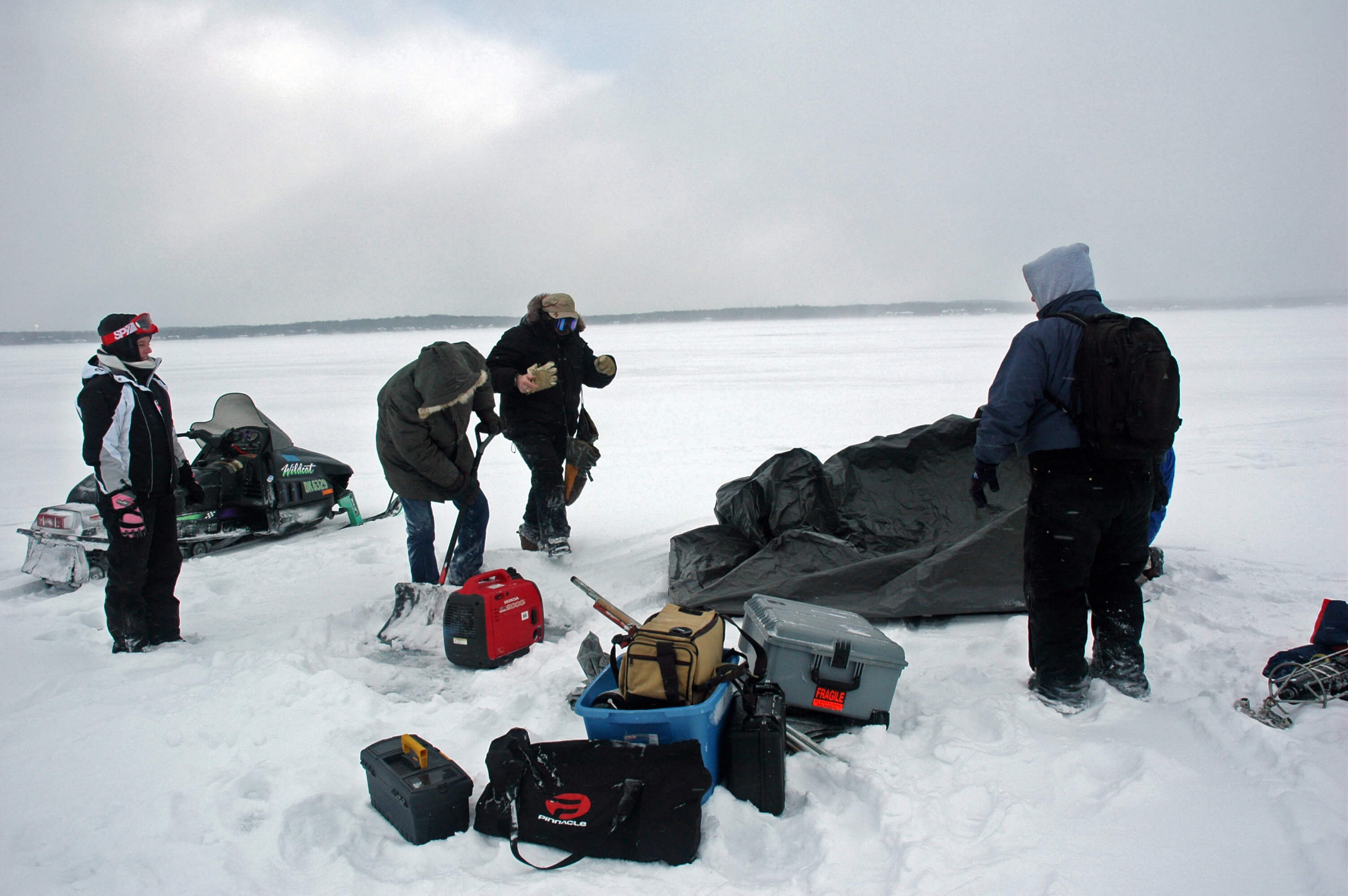
.JPG)
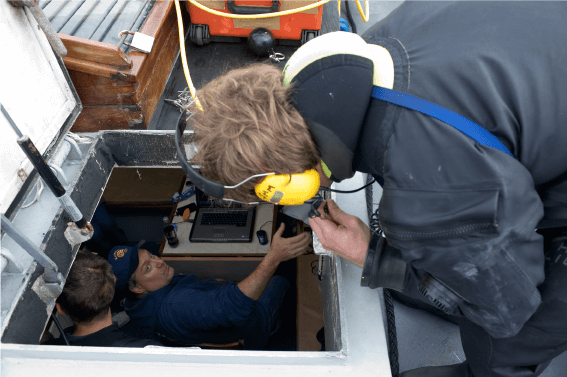
When Abbott went into business in 2004, he relied on computer technicians to build him custom systems, but the results were less than stellar. “I was driving some software and the computer would lock up, a daily thing, and it drove me insane,” he recalls. He took an Alienware recommendation and it ran okay—until software upgrading. Those in the know informed him that what he “paid a good chunk of change for” was actually a gaming system and what he really needed was a system purpose-built to process his data. Next up, in a move which required moving from a 32GB to 64GB workstation, Abbott configured a Dell Precision and requested Windows 7 to accommodate his software. Unfortunately, the system arrived with Windows NT which was incompatible. When he contacted Dell, he was informed that Windows NT was the only OS shipped with that model system. “I paid 4k for this?” he recalls telling the sales rep. “I said to hell with it, formatted the hard drive, and with the help of some IT people,” made it work, but that was the last straw for me.”
Abbott recalls it as “a lightbulb moment,” followed by him asking an IT expert for a recommendation. “He recommended some models, but then added that he had heard great things about a company out of Texas—BOXX with two XXs,” Abbott recalls. “I bought my first laptop, then a tower system, and I’m on my third laptop. By today’s standards, the tower is still pretty powerful, but in the next year or so I’m probably going to upgrade again. What sold me on your systems is, the IT person said BOXX will talk to Autodesk, talk to SOLIDWORKS, Adobe, and you ask them what they’re doing for the next few years with their software, then you go back and build a system that can handle that. If that’s what you’re doing, that’s what I need. I don’t need to go out and buy a new computer and discover six months later that Autodesk is coming up with a new upgrade. Then what I have is useless.”
When we discuss data storage, Abbott insists that moving to an SSD was critical, enabling him to store and move data back and forth. He admits to being, “paranoid of the cloud,” so he does backups at the end of every week, employing four external drives with one off site. “It’s not unusual for me to move 100GB of data in a week,” he says. ”If I did that on a standard computer it would take hours. I know it’s archaic but it’s my way of controlling the data. All this work I have—the sonar, the boats, the computers, the client doesn’t really care about it. They care about the data. When I started in this business, we were still using floppy discs and moving into CDs. I had a 500MB CD and files over a gig. There were no systems to handle the data. Now I can get a 16GB stick drive for four bucks. What will the next 15 years bring for data storage and can that computer save that data or move it to some external hard drive besides the cloud? That’s why I look to BOXX as being in the forefront to help me do that. My clients may need to look at these projects ten years from now. Still got that report? We lost it. You created a baseline survey for us back in 2008 and its now 2020 and we want to see what the original report looked like to see if changes have taken place on that structure.”
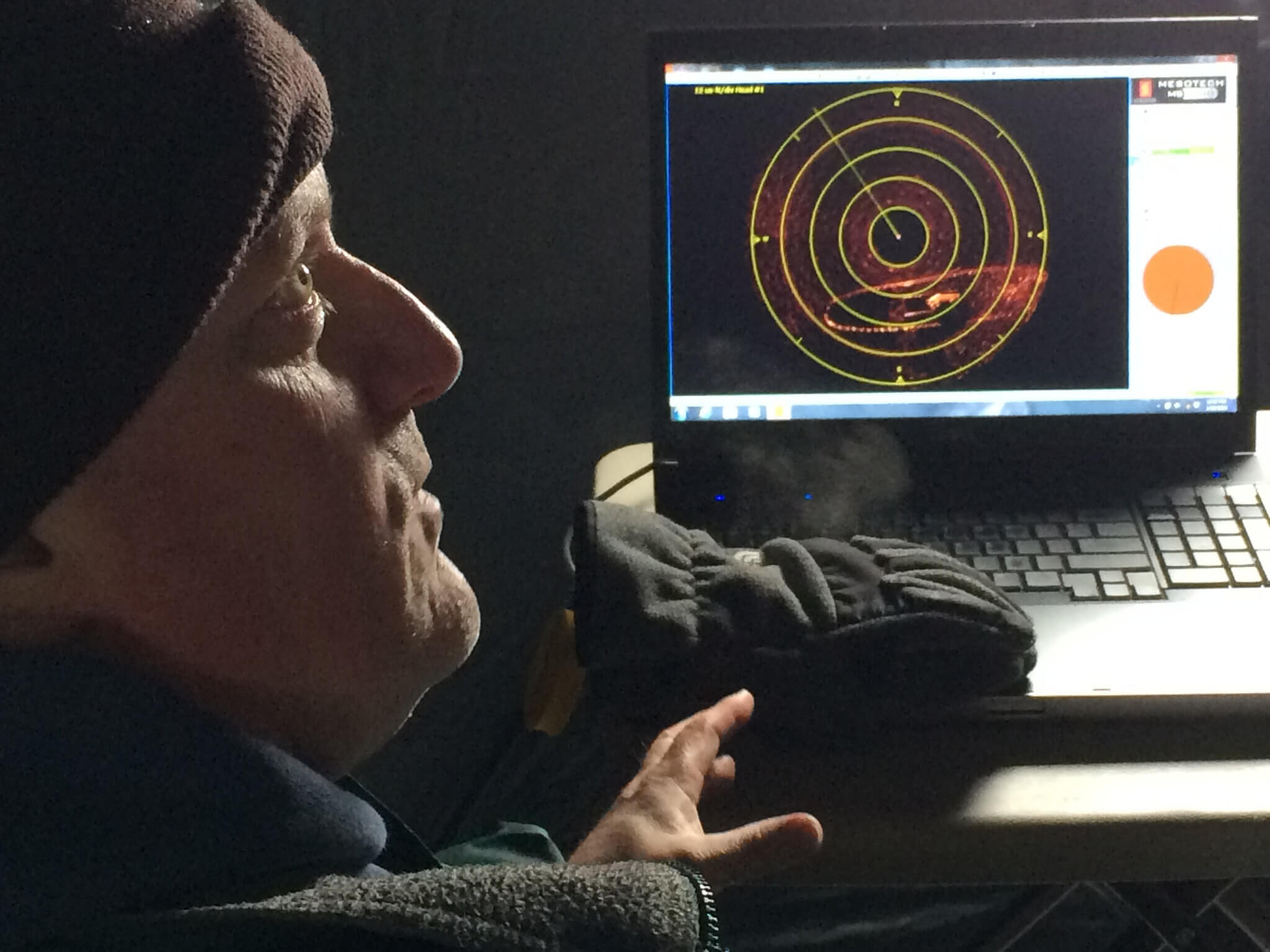
When I ask Abbott if he’s ever relied on legendary BOXX Technical Support, he emphatically answers, “Yes, and it was awesome.” In fact, he says it is another positive that sold him on the hardware manufacturer. Whether upgrading, switching to a different drive, installing additional memory or a new graphics card, Abbott is grateful for their honesty and expertise. “I can always have them look at my system and see what they recommend. I may ask about putting in a new NVIDIA card and whether or not everything will still work right. They may say, ‘Yes, that will help your system,’ or ‘You should wait to upgrade to a bigger system with a more powerful GPU.’ I really respect that. When I would call other computer manufacturers, I’d get someone outside of North America who didn’t understand what I was asking. That’s probably the number one reason I came to BOXX. You’re a U.S. - based manufacturer of custom computer systems, and everything just works. It’s been great.
Abbott bought his first BOXX workstation from (now retired) BOXX performance specialist Gerrie Schwartz, and now works with AEC specialist Matt Gubitz. “Matt has been great to work with,” says Abbott. “Everyone at BOXX has been so supportive, even if there is no sale. I feel comfortable calling and asking about what you guys are developing. In a year from now, I’ll probably upgrade because I want a workstation on the cutting edge that will last me. I can put in another hard drive, memory, card, whatever I want, and BOXX allows me to do that. As long as you keep making them the way you do and supporting me the way you do, you got me hooked.”
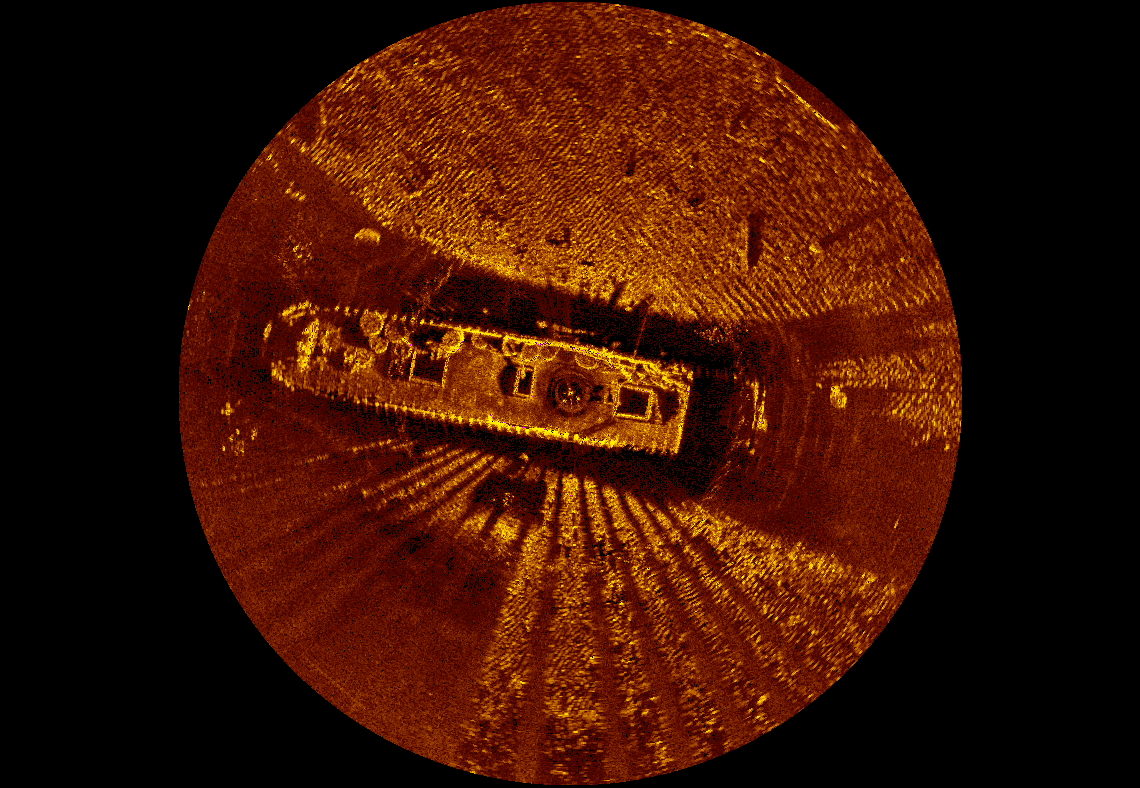
Abbott refers to his infrastructure work as his “bread and butter,” yet he also does a lot of archeological work. In fact, Abbott just recently returned from Virginia where he was looking at shipwrecks from the Battle of Yorktown, the last battle of the American Revolution. Abbott surveys a lot of shipwrecks. He’s captured sonar images from Civil War battles, primarily ironclads, and searched the James River looking for forts or ships that may have been scuttled by the Confederacy during the war. Since 2014, he has also assisted in the search for World War II MIA (missing in action) servicemen throughout the Pacific. “The objective is to find a missing plane, tank, or landing craft underwater,” he says, “so I pack up the sonar gear, fly to an island battle site like Yap, Kwajalein, or Tarawa, where there alone we found twelve different tanks or landing craft underwater that could possibly hold the remains of Marines. It’s a very humbling experience to see these guys who disappeared in 1943 still there. In my world, they need to be brought home. It’s very emotional. There is some family member out there who wonders what happened to their uncle, brother, father, or grandfather, that they still care about. I was out there this year for three weeks looking for fighter planes and B24 bombers. We stop once we find the plane. If we find a component with a serial number on it, we determine who that plane belonged to and that person can be moved from MIA to KIA (killed in action). We don’t excavate remains. We just locate the target and turn it over to the authorities. They can sift through sand, clay and mud and still do genetic testing of one or numerous individuals.” There are still missing Gato class submarines (each with crews of over 60 crew members) as well as lost troop transport ships. In the 20th century alone, from World War I through Vietnam, there remain 80,000 American MIAs—58,000 of those from World War II.